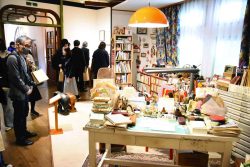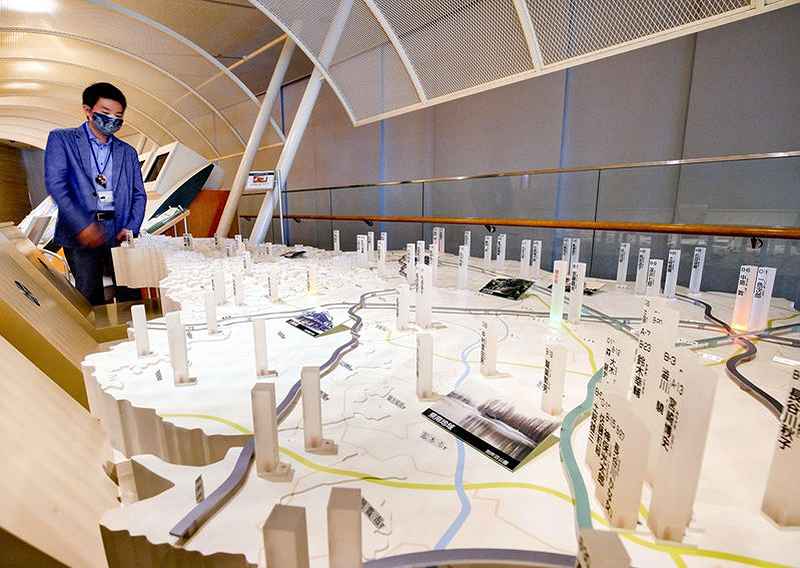
The “map of literature” of Saitama Prefecture at the exhibition room on the first floor of the Saitama Museum of Literature
December 7, 2021
Visitors to the Saitama Museum of Literature are greeted in the exhibition room on the first floor with a “map of literature” modeled after the shape of the prefecture. The map shows areas related to each of 90 literary figures who lived in the prefecture or wrote works set in the prefecture. The museum also preserves and exhibits 170,000 items related to such prefecture-associated literary figures.
Among the areas noted on the map is the town of Ranzan in the central part of the prefecture, with a marker on the area bearing the name of poet Akiko Yosano. Yosano was born in Osaka but wrote a poem about the beauty of the Ranzan valley, which she visited on a trip in 1939.
Hanno city is represented by Yukio Mishima. His novel “Beautiful Star,” depicting a family of four who discover that they are all from different planets, is set in the city.
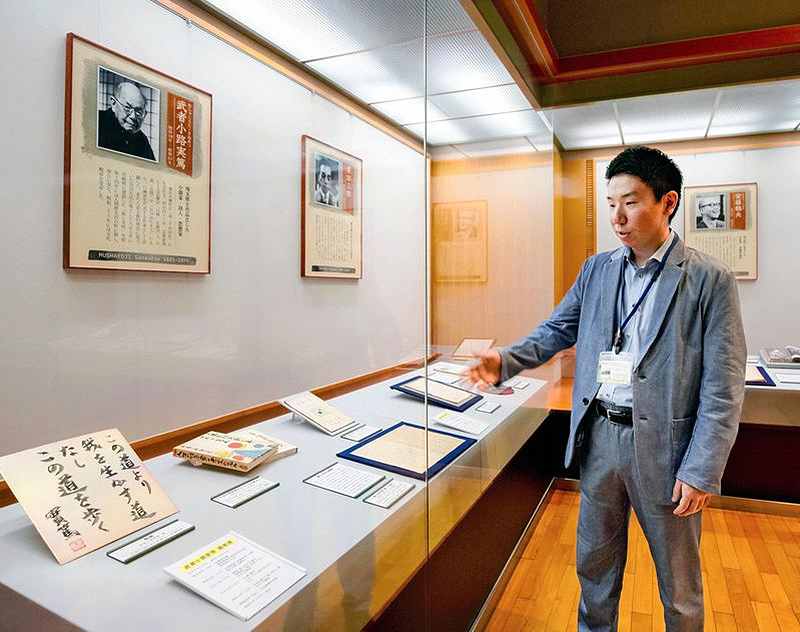
Beneath the panels explaining literary figures are their notes for writing and the stationery they used.
The names of literary figures are scattered throughout the map. Curator Ryo Kageyama, 33, said Saitama Prefecture must have been an ideal and convenient place for writers living in Tokyo to describe suburban areas.
The achievements of literary figures who have particularly close ties to the prefecture are introduced on the first basement floor. Heading the list is writer Saneatsu Mushanokoji, who founded the Atarashiki-mura community in Moroyama with the goal of it being a utopia. After founding literary magazine Shirakaba with Naoya Shiga and others, Mushanokoji opened a village in Miyazaki Prefecture in 1918 and founded Higashi no Mura village in Moroyama in 1939. His memo on Atarashiki-mura, with additions and revisions he made, is among items displayed in the exhibition room.
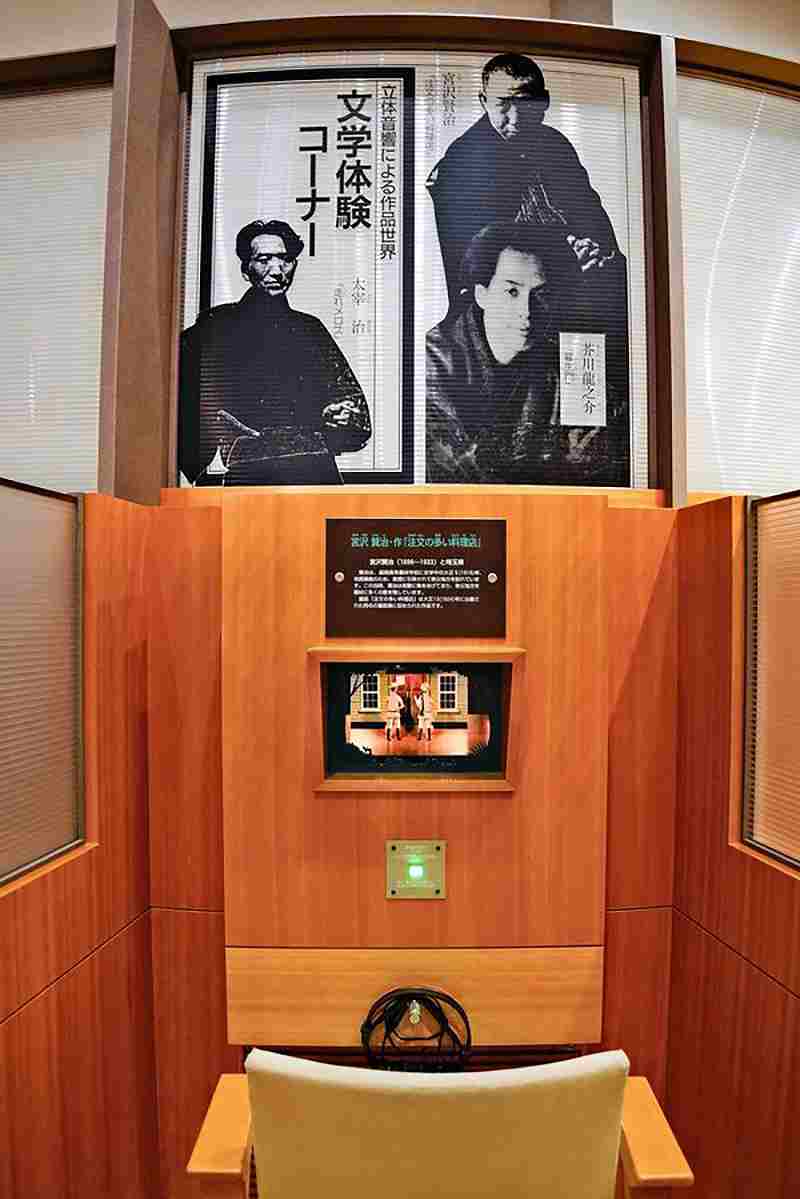
A collection of works related to novelist Kafu Nagai
Other exhibits include those related to Yoshiko Mikajima, a poet from Tokorozawa, and Muraji Uchiki, who wrote the novel “Ten no Sono” (The garden of heaven) based on his childhood in Higashi-Matsuyama.
A shikishi autograph board, notes for writing and a fountain pen are among materials left by the writers, helping visitors better understand the literary figures.
More and more young women have been visiting the museum over the past couple of years due to the popularity of manga and video games featuring great writers as characters, according to Kageyama.
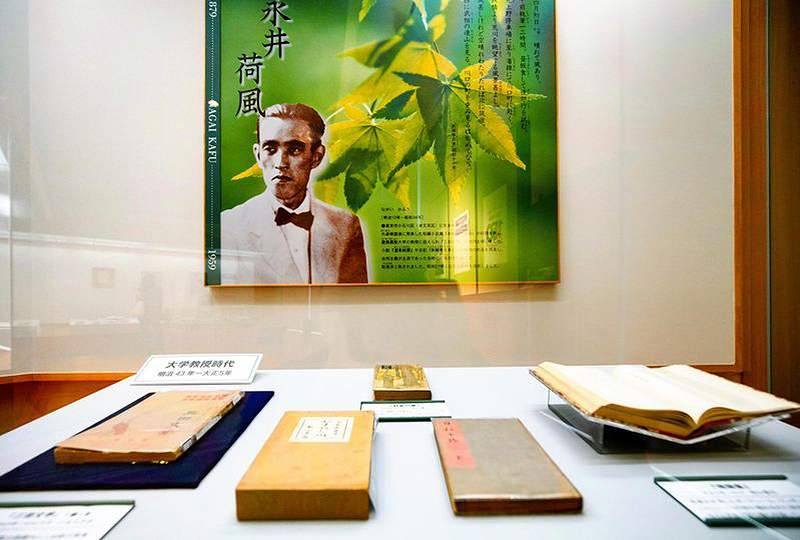
A three-dimensional sound system allows visitors to listen to a reading of a masterpiece.
“Young visitors pay close attention to the writers’ backgrounds and their social settings,” Kageyama said. “I would like to organize more exhibits for younger generations to enjoy by making use of the abundant materials available.”
The museum is a five-minute walk from JR Okegawa Station in Okegawa, Saitama Prefecture. The glass-walled building with an open structure can be seen beyond the lush greenery of Eki Nishiguchi Koen park.
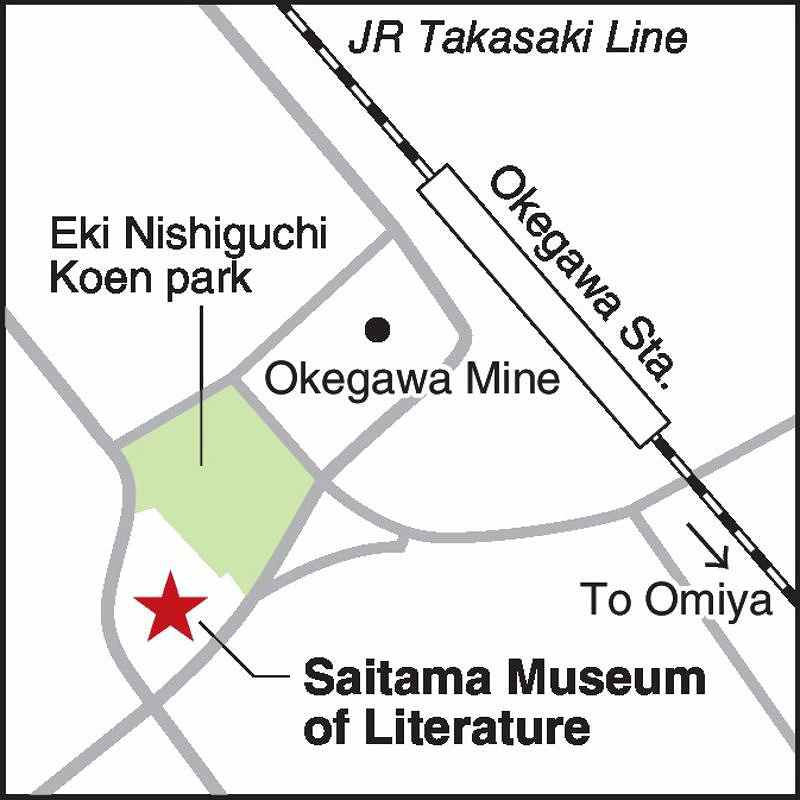
Saitama Museum of Literature: 1-5-9 Wakamiya, Okegawa, Saitama Prefecture
"Culture" POPULAR ARTICLE
-

Van Cleef & Arpels Dazzles with Art Deco Artisanry at Tokyo Exhibit
-

Disney’s ‘Twisted-Wonderland’ Animated Series Puts Villains in Spotlight: New Show Features School Inspired by Classic Disney Films
-

Ayumi Hamasaki’s Shanghai Concert Canceled Day Before Schedule as Part of Beijing Backlash
-

‘The World Masterpiece Theater Series’ Celebrates 50 Years; Animator Looks Back on Creating Anime Classics
-

Popularity of Piggy Banks Across Time and Place Seen at Bank’s Museum of Money Boxes in Hyogo Pref.
JN ACCESS RANKING
-

Tokyo Economic Security Forum to Hold Inaugural Meeting Amid Tense Global Environment
-

Keidanren Chairman Yoshinobu Tsutsui Visits Kashiwazaki-Kariwa Nuclear Power Plant; Inspects New Emergency Safety System
-

Imports of Rare Earths from China Facing Delays, May Be Caused by Deterioration of Japan-China Relations
-

University of Tokyo Professor Discusses Japanese Economic Security in Interview Ahead of Forum
-

Japan Pulls out of Vietnam Nuclear Project, Complicating Hanoi’s Power Plans



